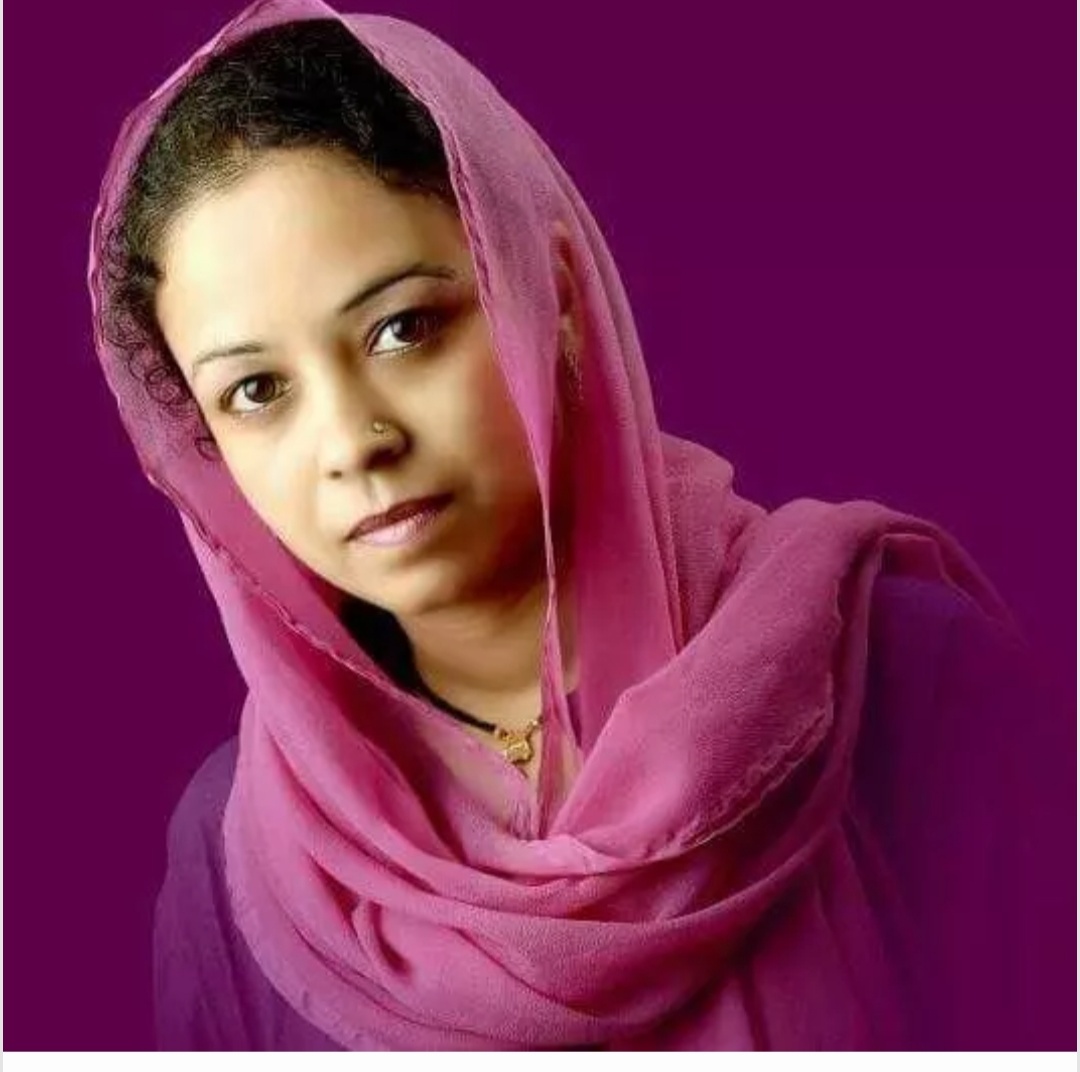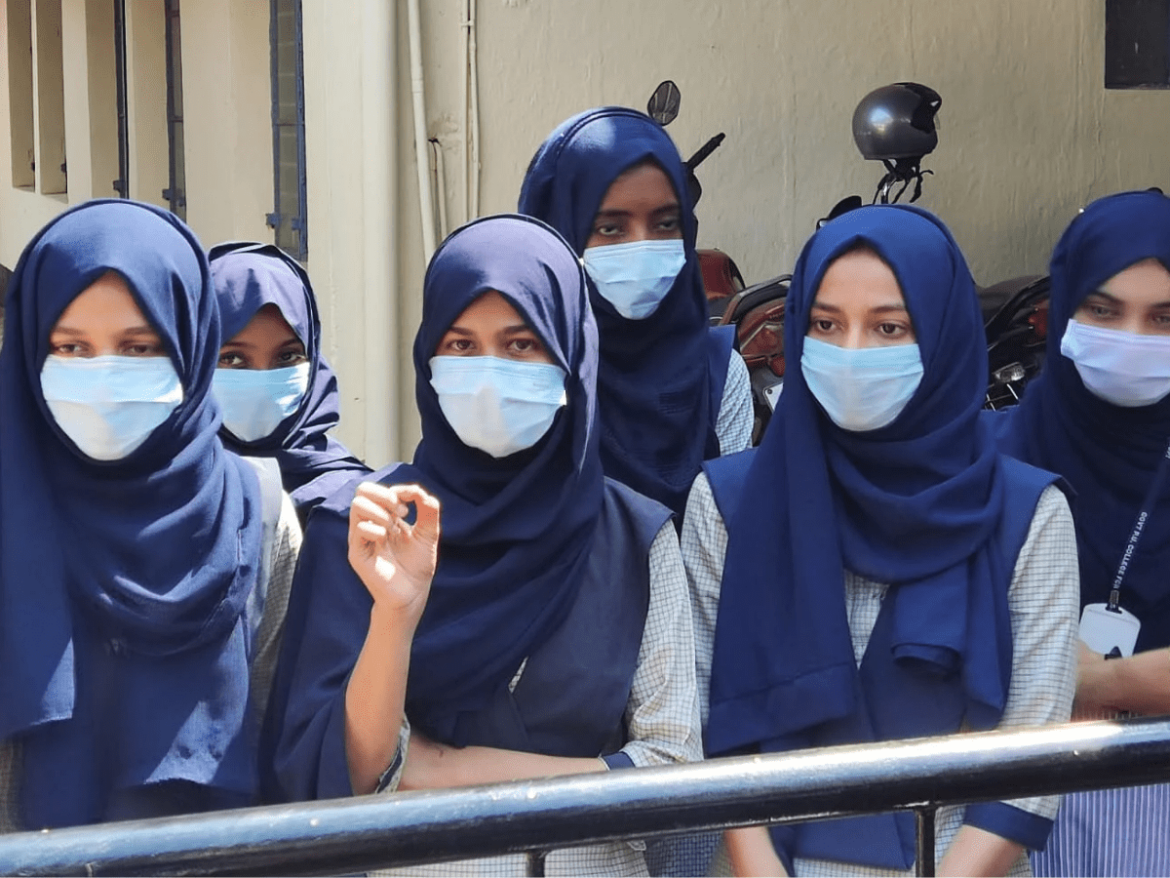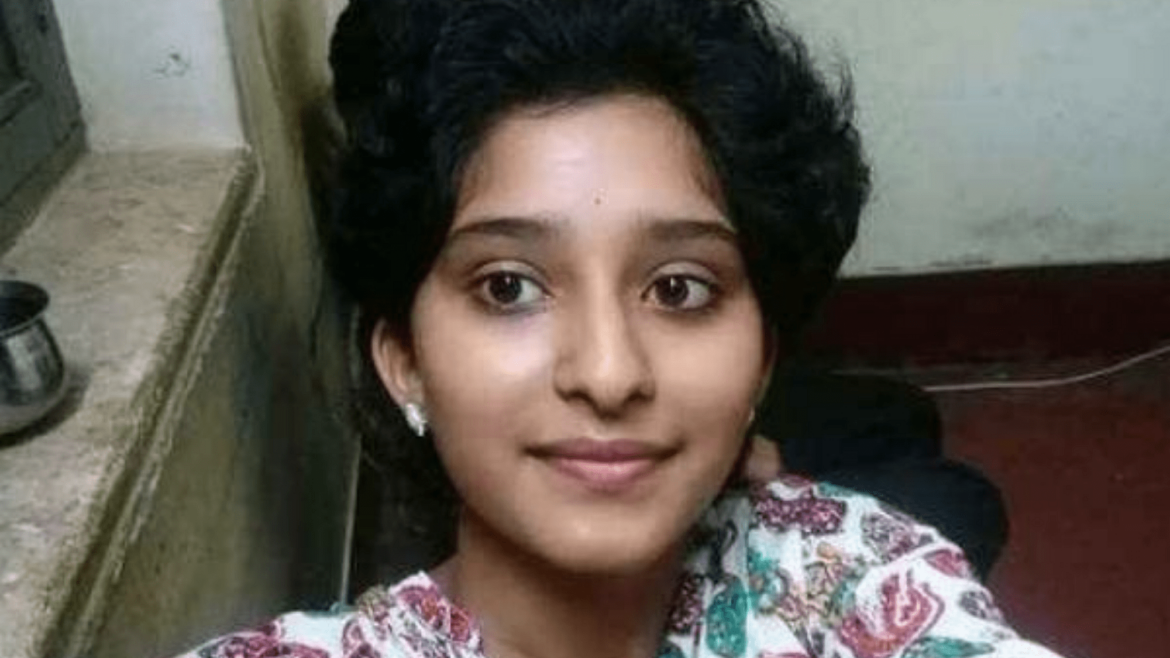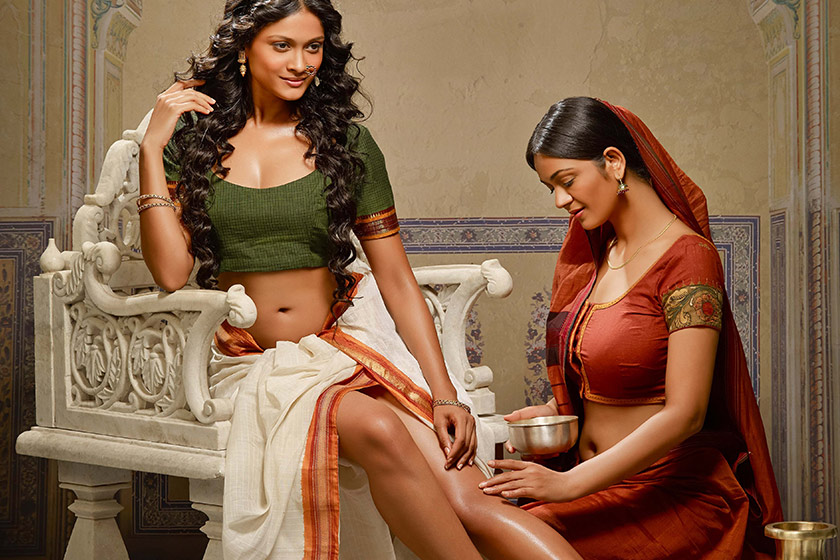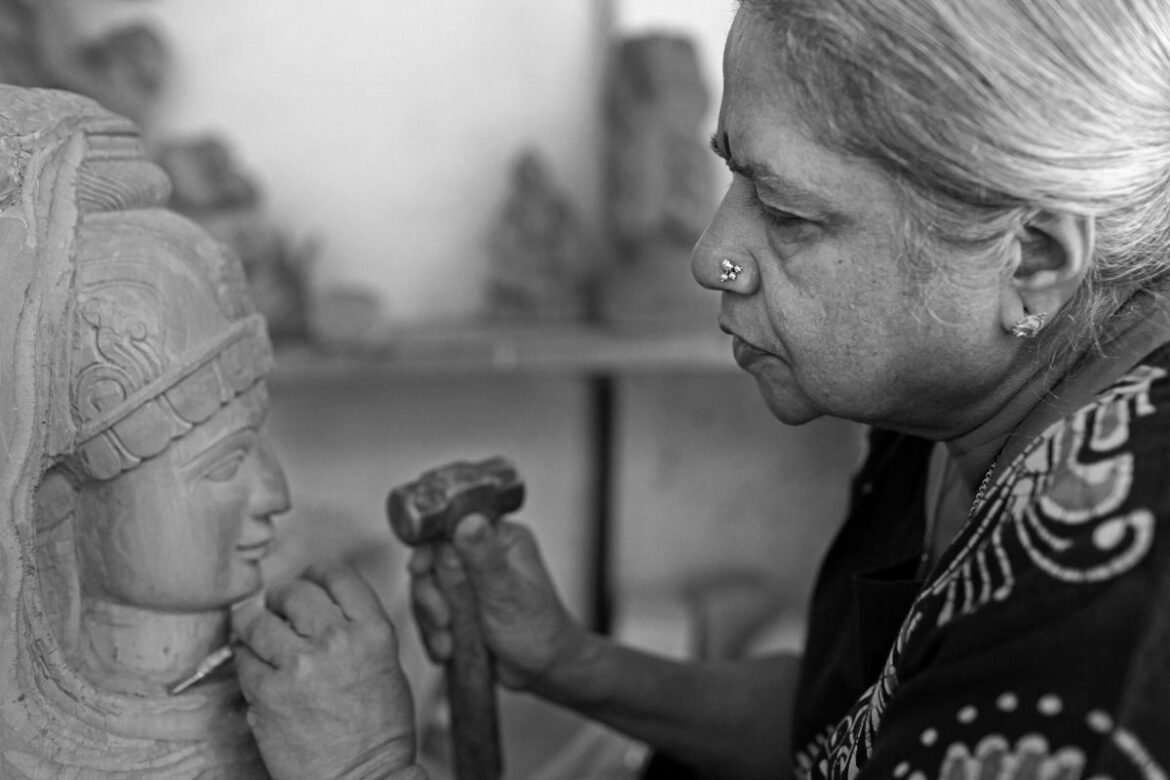लेखिका समिना खालीक शेख
“हिला रहा है कौन आज बुनियादें
बुलंदतर घरों को सोंचना होगा
शरीफ मछलियाँ डरी डरी सी क्युं है,
सभी समंदरों को सोचना होगा || कविवर्य कलीम खानउपरोक्त पंक्तियों के समान कुछ हमारे प्यारे भारत में बनाया गया है, जो अब एक धर्मनिरपेक्ष, लोकतांत्रिक देश है। इस समय देश में केवल एक ही विषय पर चर्चा हो रही है और वह है कर्नाटक राज्य के एक कॉलेज में मुस्लिम लड़कियों के हिजाब पहनने पर प्रतिबंध। कॉलेज के प्राचार्य के अनुसार, हिजाब वर्दी के लिए एक बाधा है। दरअसल, कॉलेज “कलावरा वरदराजा गवर्नमेंट कॉलेज, उडुप्पी” की स्थापना वर्ष 2007 में हुई थी। और इस कॉलेज की स्थापना के बाद से ही मुस्लिम लड़कियां हिजाब पहनकर इस कॉलेज में आती रही हैं। तो अब हिजाब का विरोध क्यों?
दरअसल, मामला तब और बढ़ गया जब उन्हीं कॉलेज के छात्रों ने हिजाब के खिलाफ भगवा गोले पहनना शुरू कर दिया. इस वजह से प्रिंसिपल ने हिजाब का भी विरोध किया यानी प्रिंसिपल ने बिना किसी को नुकसान पहुंचाए अपने धर्म का पालन करने के संविधान द्वारा दिए गए मौलिक अधिकार पर हथौड़ा मार दिया.
इससे पहले 2016 में कर्नाटक के दक्षिण कन्नड़ में हिजाब का विरोध हुआ था, लेकिन उस कॉलेज के प्राचार्यों ने इस चलन को बढ़ने नहीं दिया.
जिस पार्टी की वर्तमान में भारत में सरकार है, वह “फासीवाद” से प्रभावित है। हिटलर ने उस समय जर्मनी में यहूदियों को निशाना बनाया था। जर्मनी में यहूदी अल्पसंख्यक थे। यहूदियों को शिक्षा से वंचित करने के लिए स्कूल या कॉलेज में जाने से रोक दिया गया था। किसी न किसी बहाने से ऐसा ही करने का प्रयास किया जा रहा है।
भारत दुनिया का सबसे बड़ा लोकतंत्र है। जो संविधान के अनुसार चलता है। भारतीय संविधान हमें सभी धार्मिक, शैक्षिक, सामाजिक और आर्थिक अधिकार देता है। हमारे देश में विभिन्न जातियों और धर्मों के लोग रहते हैं। हर 100 किमी पर भाषा बदल जाती है, स्वाद बदल जाता है। लागत राज्य से राज्य में भिन्न होती है।
वाशिंगटन में प्यू रिसर्च सेंटर के अनुसार, 81% भारतीय मुस्लिम महिलाएं हेडस्कार्फ़ या हेडस्कार्फ़ पहनती हैं। चार में से एक मुस्लिम महिला घर से बाहर निकलते समय हिजाब पहनती है। भारत में केवल मुसलमान ही नहीं बल्कि 86% सिख महिलाएं, 59% हिंदू महिलाएं और 21% ईसाई महिलाएं भी सिर पर स्कार्फ़ पहनती हैं। घूंघट पहनना कोई नई बात नहीं है। सैकड़ों वर्षों से मुस्लिम महिलाएं बुर्का पहनती आई हैं, जबकि राजस्थानी महिलाएं घूंघट पहनती आई हैं। हम भारतीय अपने धर्म का बहुत सख्ती से पालन करते हैं। न केवल हिजाब बल्कि हर धर्म के अलग-अलग प्रतीक हैं, और इन धार्मिक प्रतीकों का पालन हमारे जैसे आम भारतीय नागरिकों के लिए महत्वपूर्ण है।
अब बात करते हैं उस हिजाब के बारे में जिससे ये तूफान उठ खड़ा हुआ है. इस्लाम में दो तरह के परदे हैं। एक – शरीर को आंशिक रूप से या पूरी तरह से ढंकना और दूसरा – दूसरों के द्वारा देखे जाने से ध्यान भटकाना। पहले मामले में हिजाब, बुर्का, नकाब, घूंघट, आदि टूट गए हैं और दूसरे मामले में कुरान दरवाजे और खिड़कियों पर पर्दे, कपड़े या लकड़ी के विभाजन के पर्दे को संदर्भित करता है “(हे पैगंबर!) पुरुषों को बताओ जो इस्लाम में विश्वास करते हैं, शर्म की जगहों की रक्षा करना उनके लिए अधिक पवित्रता की बात है। (कुरआन सुरा २४ आयात ३०) कुरआन पुढे म्हणतो, “आणि (हे प्रेषिता !) इस्लाम मध्ये विश्वास ठेवणाऱ्या स्त्रियांना सांगा “की त्यांनी आपली दृष्टी अधो ठेवावी आणि आपल्या लज्जास्थळांचे रक्षण करावे. आपल्या वक्षस्थळावर आपल्या ओढणीचे आच्छादन करावे” (कुरआन सुरा २४ आयात ३१)
कुरान की उपरोक्त आयतों के अनुसार, घूंघट इस्लाम में पुरुषों और महिलाओं दोनों के लिए है। स्क्रीन ऑफ विजन उसमें भी ज्यादा जरूरी है। सआदत हसन मंटो कहते हैं, ”दुनिया की तमाम औरतें बुर्का पहन लें…….. फिर भी अपनी आंखों का हिसाब देना पड़ता है.” “घूंघट” शब्द प्राचीन संस्कृत ग्रंथों में भी पाया जाता है। संस्कृत नाटक में, यह अक्सर उल्लेख किया जाता है कि यह “अवगुणन वटी” है। क़ुरान और हदीस के अनुसार चेहरे, हाथ और पैरों को घूंघट में ढकने का मतलब यह नहीं है। हज के दौरान एक महिला का चेहरा ढंकना इस्लाम के अनुसार एक दंडनीय धार्मिक अपराध है।उस समय यदि कपड़ा उसके चेहरे को छू भी ले तो उसे दण्ड देना पड़ता है। इस्लाम की घूंघट व्यवस्था में पुरुषों और महिलाओं के साथ व्यवहार में विनम्रता, शालीनता और वासना की आवश्यकता होती है। यह प्रथा नग्नता के प्रदर्शन का विरोध करती है। वासना पर अंकुश लगाने की कोशिश कर रहा है। मनुष्य की पाशविकता में हेराफेरी नहीं की जाएगी। इसके लिए निवारक उपाय करता है।
विभिन्न देशों में हिजाब का विरोध किया गया था। इसका नारीवादी संगठनों ने विरोध किया था। ईरान जैसे मुस्लिम देश में, हिजाब का विरोध किया गया और स्वीकार किया गया, क्योंकि नक्सली गतिविधियां हिजाब में हस्तक्षेप कर सकती हैं। लेकिन भारत में मुस्लिम विरोधी कट्टर हिंदुओं ने हिजाब का विरोध किया। इसके पीछे महिलाओं के उत्थान की भावना नहीं थी, बल्कि एक धर्म विशेष के प्रति अलगाव की भावना थी। सोशल मीडिया, प्रिंट मीडिया, न्यूज चैनल, इंटरनेट जैसे कई जगहों पर इस बात को फैलाने का प्रयास किया जा रहा है। ऐसा स्कूल-कॉलेजों में हो रहा है जो ज्ञान के मंदिर हैं। कॉलेज में हिजाब या दुपट्टा पहनने की कॉलेज फीस कितनी है? यह कब पूछा जाएगा? युवा, जो देश की रीढ़ हैं, सोशल मीडिया में पूरी तरह से लीन हो गए हैं और व्हाट्सएप और फेसबुक जैसे विश्वसनीय सोशल ऐप से पाठ्यपुस्तकों और किताबों से अपनी जरूरत का ज्ञान ले रहे हैं। नतीजा यह है कि बेरोजगारी, बढ़ती महंगाई, कमजोर होती आर्थिक स्थिति, किसान आत्महत्या, महिला असुरक्षा जैसे मुद्दों पर ‘सरकार’ से बहस करने के बजाय आज के युवा जाति, मंदिर-मस्जिद, हिंदू-मुसलमान जैसे मुद्दों पर आपस में लड़ रहे हैं।
मुस्लिम लड़कियों की शिक्षा दर पहले से ही कम है। आशंका जताई जा रही है कि कर्नाटक में हिजाब का मुद्दा इन लड़कियों की शिक्षा दर को और कम कर देगा। एक ओर, फासीवाद के प्रभाव में लोग अल्पसंख्यकों को शिक्षा प्राप्त करने से रोकने की कोशिश कर रहे हैं। वहीं दूसरी ओर मुस्लिम समुदाय में कट्टरपंथी लड़कियों को बिना हिजाब के स्कूल भेजने को तैयार नहीं हैं. पैगंबर मुहम्मद (सल्लल्लाहु अलैहि वसल्लम) ने हमेशा शिक्षा का उपदेश दिया। उन्होंने स्त्री और पुरुष दोनों के लिए शिक्षा अनिवार्य कर दी थी। प्रेरितों के अनुसार कुछ लोग सोचते हैं कि केवल धार्मिक शिक्षाएँ ही महत्वपूर्ण हैं। लेकिन कुरान कहता है, “ज्ञान प्राप्त करो” और हदीस कहती है, “ज्ञान प्राप्त करो, चीन जाओ।” उस समय चीन में इस्लाम का प्रसार नहीं हुआ, जिसका अर्थ है कि प्रेरितों ने व्यावहारिक शिक्षा का भी प्रसार किया। पुरुष वर्चस्व की संस्कृति इस्लाम में भी मौजूद है। लड़कियों की शिक्षा कट्टरपंथियों की परंपरा से ज्यादा महत्वपूर्ण है। दोनों समाज के कट्टरपंथी अपने-अपने तरीके से राजनीति कर रहे हैं | इससे उन्हें भी फायदा होगा। लेकिन इससे मुस्लिम लड़कियों की पढ़ाई पर असर पड़ेगा। उनकी पहले से ही कठिन शैक्षणिक यात्रा में बाधा डालने के बजाय, यदि हम उनका समर्थन कर सकते हैं, तो वे भी निश्चित रूप से इस समाज में अपनी जगह बना सकते हैं। स्वावलंबी बनने से जीवन बेहतर हो सकता है।
कविवर्य कलीम खान म्हणतात –
“ये हिमाला, ये समंदर, से चमन अपने है,
चाँद, सुरज ये हवा, गंगो जमन अपने है I
खौफ दीलों मे न कोई, और न जहन मे शक हो,
उडने दो शोख परिंदो को, गगन अपने है II”


